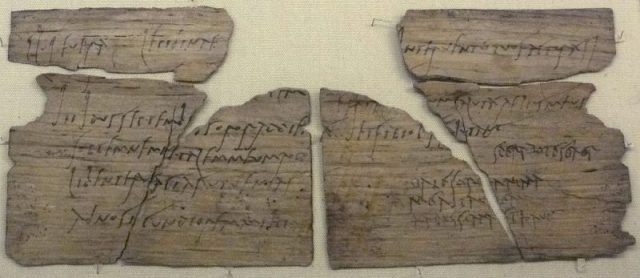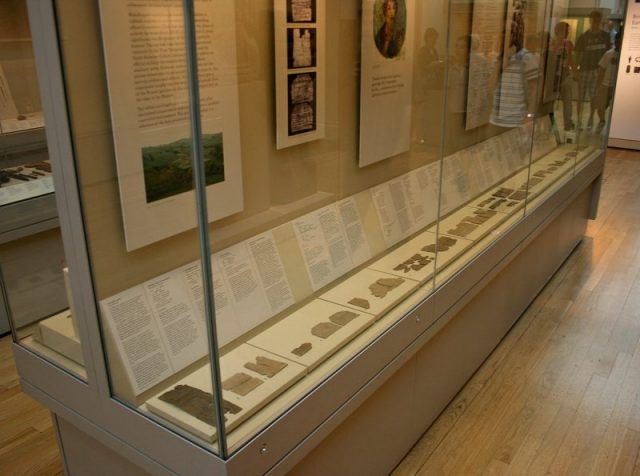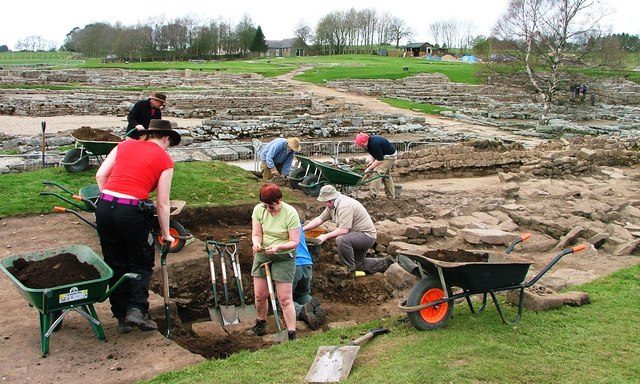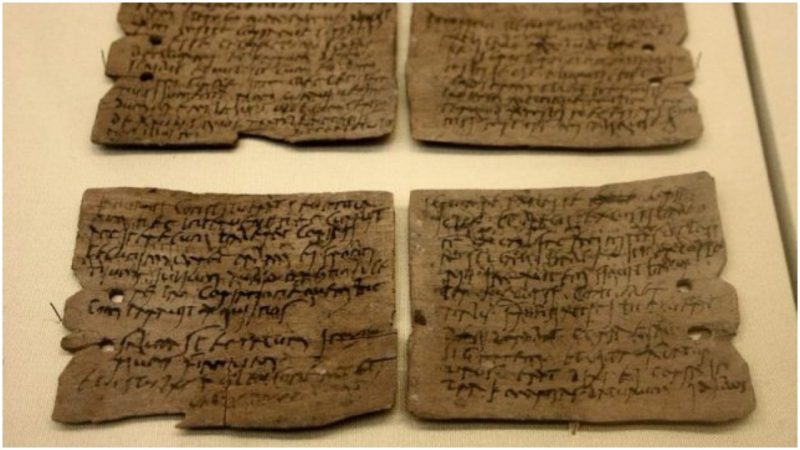The Vindolanda tablets, thin wooden writing tablets that were first unearthed at the site of a Roman fort at Vindolanda in the north of England in 1973, are considered among the most significant archaeological discoveries ever made in the United Kingdom. Ongoing archaeological digs at the site have been turning up more tablets ever since. The oldest scripts from the site, which was part of a frontier of the mighty Roman Empire, have been dated to decades before the construction of nearby Hadrian’s Wall. To date, experts have translated and reproduced some 750 samples of the tablets, while most of the pieces are preserved and stored in the British Museum.
Praised for being among the oldest handwritten documents discovered in Britain, the tablets are made of wood, very slim, and with dimensions similar to a modern-day postcard. Roman soldiers, as well as their wives, close friends, and relatives, used them as writing paper. The majority of tablets are dated to the 1st century A.D.
While similar writing evidence left behind by Romans has been retrieved from other sites, like the nearby Carlisle, it was the Vindolanda fort artifacts that attracted the most attention of the archaeologists, for here the tablets were found in exceptionally large numbers.

The wooden tablets are cut really thinly, ranging from a hundredth to a little over one-tenth of an inch thick and are made of different local timbers, including spruce and oak. The wood’s surface has been specially treated during the tablet production process so that the ink could be applied smoothly, with no snags. If a longer document were needed, for instance when officers registered an entire inventory of the garrison, several tablets were tied together.
Some of the tablets were found split or in fragments; however, there have been just enough pieces from which experts have been able to reconstruct cohesive texts and translate the contents. Many of the recovered letters are personal and gave voice to the little people, rather than some great general or other high official.

These are largely correspondences between soldiers, their superiors, or their family and acquaintances. Sometimes they also exchanged letters with people who lived in other parts of the vast empire. The tablets are fascinating because they offer a unique insight into the lives of ordinary people from two millennia ago.
People used them when they had something important to share with someone. Some of the messages reveal everyday businesses, or people informing relatives about their health–even an invitation to a party. There is also official correspondence such as garrison members sending requests for more liquor to be delivered to the fort or asking for leave. There is at least one piece addressed to the Roman emperor Hadrian, though it is unlikely this particular letter was ever sent to him.

The writers exclusively used Latin to scribe the tablets. A fair deal of the writing seems to lack punctuation or to contain spelling mistakes, and some inscriptions are indecipherable. One of the most famous deciphered messages reveals an invitation to a birthday party, penned by the commander’s spouse, Claudia Severa, and dated to around 100 A.D. Some believe this is the oldest known Latin message penned by a woman.
Along with wooden tablets, hundreds of pens have been discovered at the Vindolanda site. Pen nibs were normally of well-forged iron, and the local blacksmith sometimes embossed them with his mark. The nib would be fastened on a hollow handle made of wood that contained ink made from a mix of substances such as gum arabic and carbon. The ink inscriptions are not legible today, and infrared photography is used to recapture the written records.

To date, more than 1,300 tablets have been recovered from the Vindolanda fort site. As excavations are still carried by the Vindolanda Trust, more tablets continually resurface. The latest exciting find of a corpus of tablets and fragments took place in the summer of 2017, when around 25 fragile pieces, exceptionally thin, were harvested by archaeologists.
They believe all 25 of the bunch belong to a single archive that was thrown away at the end of the 1st century A.D. Experts are yet to decipher all messages written on these. The tablets survived after ending up in a particularly favorable anaerobic soil environment.
During the last couple of years, reportedly some 75 pieces of tablet have been recovered. The most distinguished discovery of all time occurred in 1992, when a cache of hundreds of letters was unearthed from Vindolanda.
